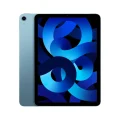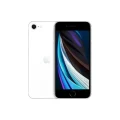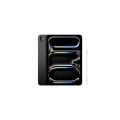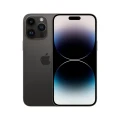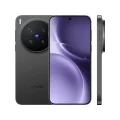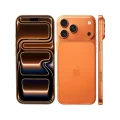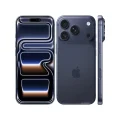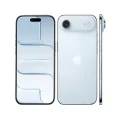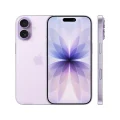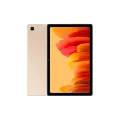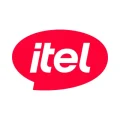- Home
- All Products
- Apple
- Apple iPhone X
Apple iPhone X


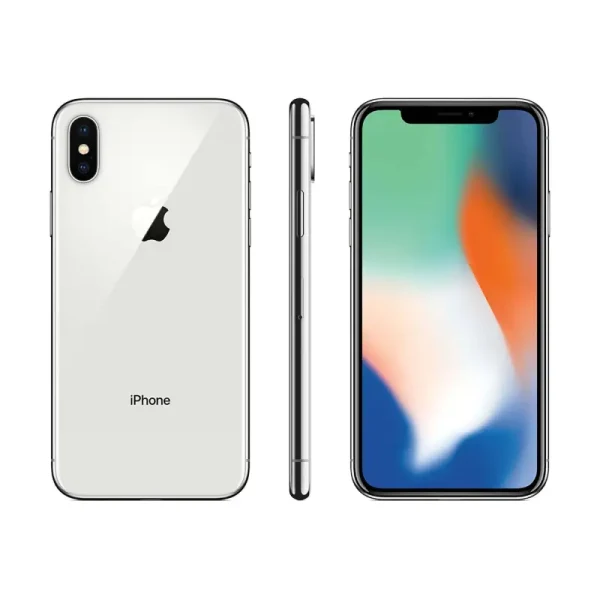

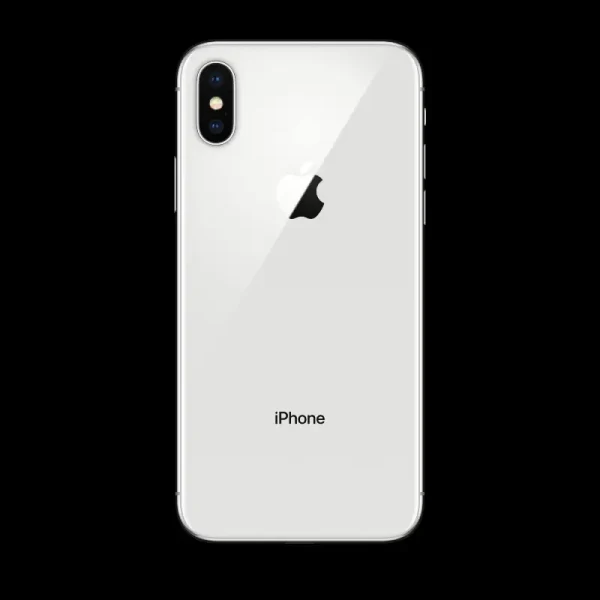
-
Battery: Li-Ion 2716 mAh
-
RAM: 3GB, 3GB
-
Storage: 64GB, 256GB
-
Display: Super Retina OLED, 5.8 inches
-
Camera: Rear 12 MP+12 MP, and Front 7 MP
-
OS: iOS 11.1.1, up to iOS 16.6.1
Full Specifications
Price
| Official | 89999 BDT 3GB/64GB, 120499 BDT 3GB/256GB Approx. |
General
| Model | Apple iPhone X |
| Announced | 2017, September 12 |
| Released | 2017, November 03 |
| Status | Available |
Design
| Dimensions | 143.6 x 70.9 x 7.7 mm (5.65 x 2.79 x 0.30 in) |
| Weight | 174 g (6.14 oz) |
| SIM SIM (Subscriber Identity Module) is a small card that contains mobile network subscriber's account information. This allows the phone using the card to attach to a mobile network. The SIM card is most commonly associated with GSM and UMTS mobile networks. Moving a SIM card from one phone to another allows a subscriber to switch mobile phones without having to contact their mobile network carrier. SIM cards can also be used by a phone to store limited amounts of data, such as phone numbers and text messages. |
Nano-SIM IP67 dust/water resistant (up to 1m for 30 min) Apple Pay (Visa, MasterCard, AMEX certified) |
| Colors |
Space Gray, Silver |
Display Specification
| Display Type Display Technology => A number of display technologies and types used in mobile phones => TFT (Thin Film Transistor), IPS (In-Place Switching), OLED (Organic Light Emitting Diode), AMOLED (Active-Matrix Organic Light-Emitting Diode), Super AMOLED (an even advanced version of AMOLED), Resistive Touchscreen (Resistive touchscreens contain two layer of conductive material with a very small gap between them which acts as a resistance), Capacitive Touchsceen (Capacitive touchscreen technology consists of a layer of glass coated with a transparent conductor) | Super Retina OLED |
| Size | 5.8 inches, 84.4 cm2 |
| Resolution | 1125 x 2436 pixels, 19.5:9 ratio |
| Pixel Density Pixel Density (PPI) is refers to the concentration of pixels on a particular display, measured in pixels per inch (ppi). Pixel density is calculated by dividing the diagonal pixel resolution of a display by its diagonal size, higher pixel density better display quality. | 458 ppi density |
| Display Protection Display Protection => Gorilla Glass is a special alkali-aluminosilicate glass shield with exceptional damage resistance that helps protect mobile displays from scratches, drops, and bumps of everyday use, It is always better to go for a smartphone with Gorilla Glass for that added protection and peace of mind. | Scratch-resistant glass, 3D Touch |
| Features |
HDR10, Dolby Vision, 625 nits (HBM) 82.9% screen-to-body ratio |
Platform
| Operating System OS => Every computer system run on a base software called Operating System (OS). Operating System controls all basic operations of the computer (such as smartphone, PDAs, tablet computers and other handheld devices). The Operating System allows the user to install and run third party applications (apps), apps are used to add new functionality to the device. | iOS 11.1.1, up to iOS 16.6.1 |
| Chipset Chipset is a group of integrated circuits designed to perform one or a more dedicated functions, often with real time computing constraints, Popular smartphones are equipped with more advanced embedded chipsets that can do many different tasks depending on their programming. | Apple A11 Bionic (10 nm) |
| CPU CPU (Central Processing Unit) mostly known as processors, CPU processes instructions in order to carry out certain functions that make your device operate properly. Processors are often described as the brain of computers, smartphones and tablets, Smartphones and tablets rely on processors to carry out their every task, Processors are an incredibly important factor in selecting any type of computing device, including your smartphone. | Hexa-core 2.39 GHz (2x Monsoon + 4x Mistral) |
| GPU GPU (Graphics Processing Unit) is a single-chip processor designed to rapidly manipulate and alter memory to accelerate the creation of images in a frame buffer intended for output to a display, This includes things such as lighting effects, object transformations, and 3D motion. | Apple GPU (three-core graphics) |
Main Camera
| Camera Setup | Dual |
| Resolution |
12 MP, f/1.8, 28mm (wide), 1/3", 1.22µm, dual pixel PDAF, OIS 12 MP, f/2.4, 52mm (telephoto), 1/3.4", 1.0µm, PDAF, OIS, 2x optical zoom |
| Features |
Quad-LED dual-tone flash, HDR (photo/panorama), panorama, HDR |
| Video | 4K@24/30/60fps, 1080p@30/60/120/240fps |
Selfie Camera
| Camera Setup | Single |
| Resolution |
7 MP, f/2.2, 32mm (standard) SL 3D, (depth/biometrics sensor) |
| Video | 1080p@30fps |
| Features | HDR |
Network & Connectivity
| Technology | GSM / HSPA / LTE |
| Speed | HSPA 42.2/5.76 Mbps, LTE-A (3CA) Cat12 600/150 Mbps, EV-DO Rev.A 3.1 Mbps |
| Wi-fi Wi-Fi is a popular wireless networking technology using radio waves to provide high-speed network connections that allows devices to communicate without cords or cables, Wi-Fi is increasingly becoming the preferred mode of internet connectivity all over the world. | Wi-Fi 802.11 a/b/g/n/ac, dual-band, hotspot |
| Bluetooth Bluetooth is a wireless communications technology for exchanging data between mobile phones, headsets, computers and other network devices over short distances without wires, Bluetooth technology was primarily designed to support simple wireless networking of personal consumer devices. | 5.0, A2DP, LE |
| NFC NFC (Near field communication) is a set of standards for smartphones and similar devices to establish peer-to-peer radio communications with each other by touching them together or bringing them into proximity, usually no more than a few inches. | Yes |
| Positioning |
GPS, GLONASS, GALILEO, QZSS |
| FM Radio | No |
| USB | Lightning, USB 2.0 |
| 2G Network |
GSM 850 / 900 / 1800 / 1900 |
| 3G Network |
HSDPA 850 / 900 / 1700(AWS) / 1900 / 2100 |
| 4G Network |
1, 2, 3, 4, 5, 7, 8, 12, 13, 17, 18, 19, 20, 25, 26, 28, 29, 30, 34, 38, 39, 40, 41, 66 |
Battery
| Battery Type Battery Type => Cell phones run on various kinds of batteries depending on the manufacturer, phone size or shape and features. There are basically four types of cell phone batteries => Lithium Polymer, Lithium Ion, Nickel Metal Hydride and Nickel Cadmium. | Li-Ion (Lithium Ion) |
| Capacity Battery Capacity is a measure (typically in Amp-hr) of the charge stored by the battery, and is determined by the mass of active material contained in the battery. The battery capacity represents the maximum amount of energy that can be extracted from the battery under certain conditions. | 2716 mAh |
| Removable | No |
| Charging |
15W wired, PD2.0, 50% in 30 min (advertised) Wireless (Qi) |
| Wireless Charging Wireless Charging (Inductive Charging) uses an electromagnetic field to transfer energy between two objects. This is usually done with a charging station. Energy is sent through an inductive coupling to an electrical device, which can then use that energy to charge batteries or run the device. | Yes |
Multimedia
| Loudspeaker | Yes, with stereo speakers |
| Audio Jack | No |
Storage
| Card Slot Memory Card Slot is a special slot for inserting a memory card. Memory cards allow you to expand the phone's built-in memory, A memory card (sometimes called a flash memory card or a storage card) is a small storage medium used to store data such as text, pictures, audio, and video, for use on small, portable or remote computing devices such as mobile phones, mp3 players, digital cameras. | No |
| Internal Storage Internal Storage is a data storage space (flash memory) mostly used in smartphones, tablets and other electronic devices where operating system, apps, music, photos, videos, files and other user data Is stored. |
64GB 3GB RAM, 256GB 3GB RAM NVMe |
Sensors
| Fingerprint | No |
| Other Sensors | Face ID, accelerometer, gyro, proximity, compass, barometer |
About the Apple iPhone X
The Apple iPhone X marked a major milestone in Apple’s smartphone history, introducing a bold new design and cutting-edge features that changed the iPhone lineup forever. Released in November 2017, this was the first iPhone to feature a Super Retina OLED display with HDR10 and Dolby Vision, delivering deep blacks and vibrant colors on its 5.8-inch edge-to-edge screen. Powered by the Apple A11 Bionic chip, the iPhone X offered fast and efficient performance for gaming, multitasking, and photography. Its dual 12MP rear cameras with OIS capture sharp photos and 4K videos, while the 7MP TrueDepth front camera introduced Face ID — Apple’s secure facial recognition system.
The device’s premium glass and stainless-steel design supports wireless charging (Qi) and fast charging (15W). Even years later, the iPhone X remains a stylish and powerful smartphone for users who appreciate Apple’s craftsmanship and reliability.
Main Key Features
- 5.8-inch Super Retina OLED display (1125×2436 pixels)
- Apple A11 Bionic chip with hexa-core CPU
- Dual 12MP (wide + telephoto) rear cameras with OIS
- 7MP TrueDepth selfie camera with Face ID
- iOS 11, upgradable to iOS 16.7.12
- Wireless and fast charging (15W)
- IP67 water and dust resistance
- Stainless steel frame, glass back
Pros & Cons
Pros
- Premium design with edge-to-edge OLED display
- Strong A11 Bionic performance
- Excellent dual-camera system with portrait mode
- Face ID for secure unlocking
- Supports wireless charging
Cons
- No 3.5mm headphone jack
- Battery life could be better
- Expensive repair costs
- No memory card slot
Why Choose This Phone?
Choose the iPhone X if you want a stylish, powerful iPhone with a modern design and great camera system. It’s ideal for users who appreciate Apple’s smooth performance, OLED display, and Face ID security, without paying flagship-level prices today.
Opinion
The Apple iPhone X remains one of Apple’s most iconic smartphones. Even in 2025, it offers strong performance, solid build quality, and a premium experience. For users seeking an affordable yet classic iPhone with an OLED display and Face ID, the iPhone X is still a smart pick.
See Another Model:
- Apple iPhone 17
- Apple iPhone Air
- Apple iPhone 17 Pro
- Apple iPhone 17 Pro Max
- Apple iPhone 16 Pro Max
- Apple iPhone 16 Pro
FAQs about Apple iPhone X
Q: Does the iPhone X support Face ID?
A: Yes, the iPhone X was the first iPhone to introduce Face ID.
Q: Can the iPhone X be updated to iOS 17?
A: No, it officially supports up to iOS 16.7.12.
Q: Is the iPhone X waterproof?
A: It has an IP67 rating, meaning it can handle splashes and brief water exposure.
Q: Does it support wireless charging?
A: Yes, the iPhone X supports Qi wireless charging.
Q: Is the iPhone X still worth buying in 2025?
A: Yes, it’s a great choice for users seeking premium quality and performance at a lower price.
Give Your Review
Disclaimer Note
You can write your own disclaimer from APS Settings -> General -> Disclaimer Note.

